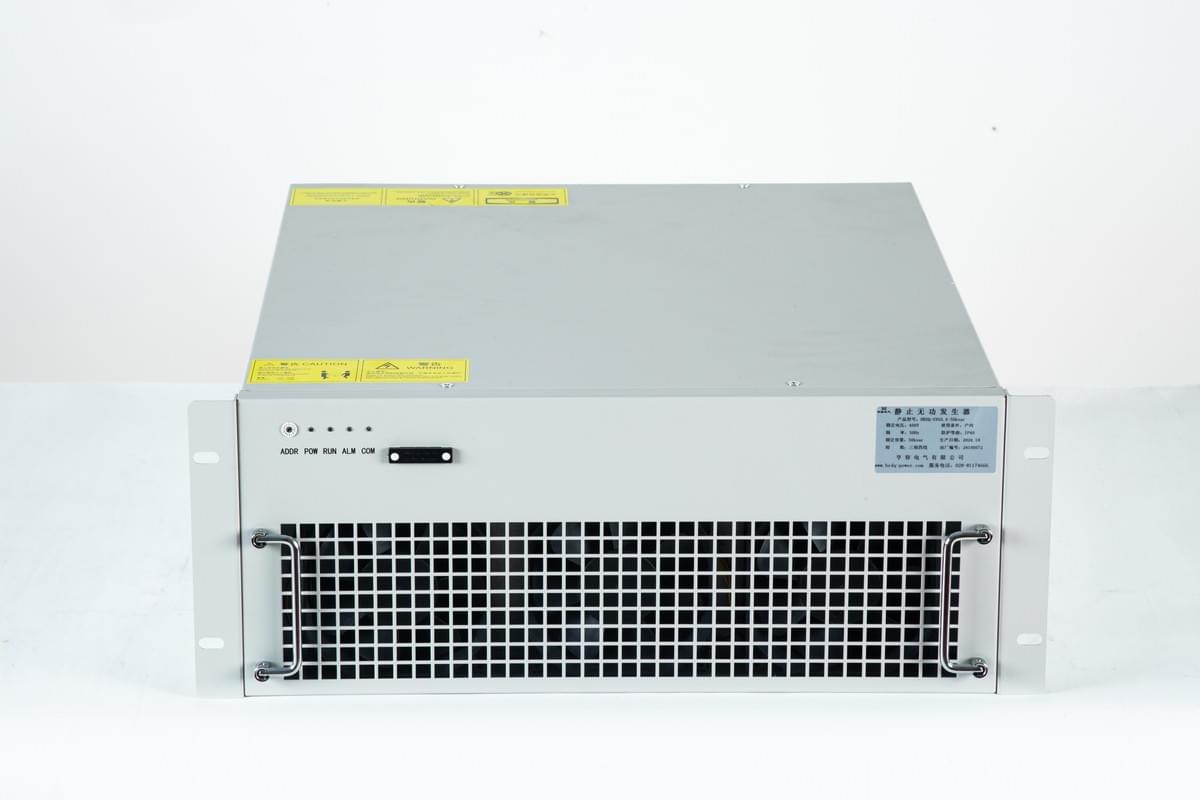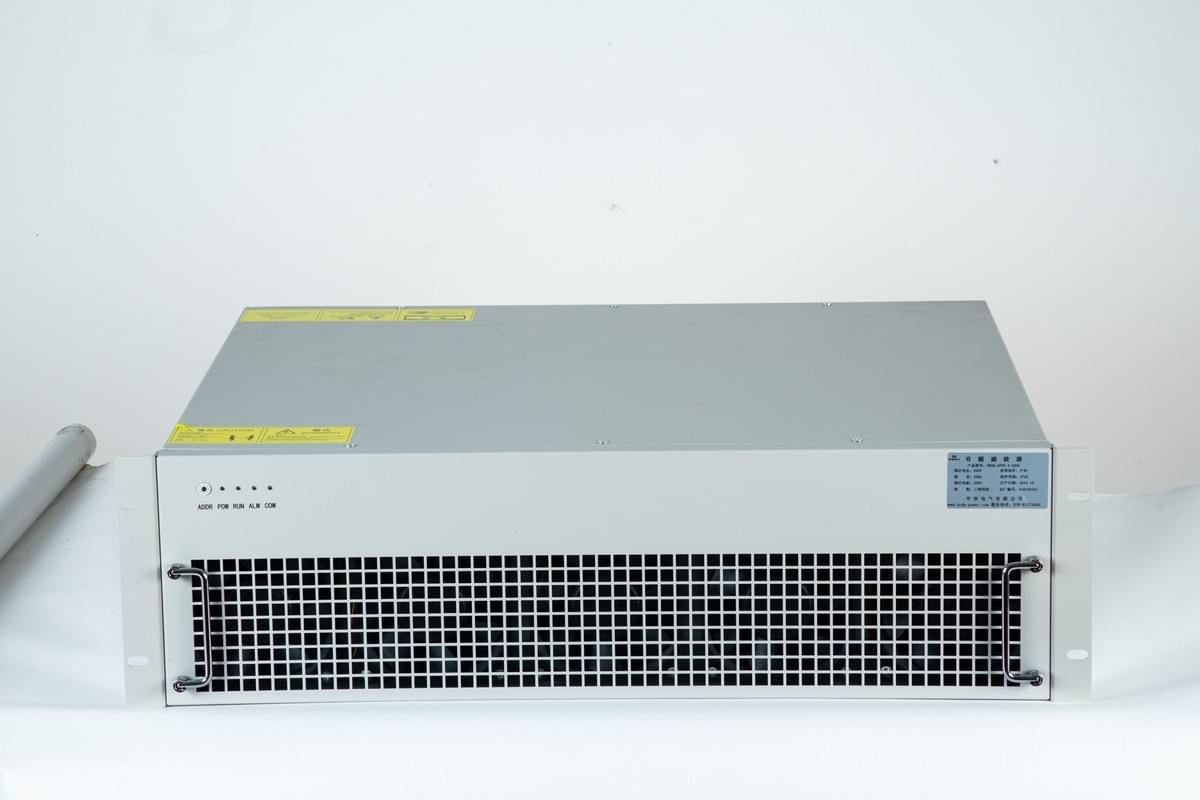With the rapid development of electrified railways, harmonics and negative sequences have increased significantly. Active Power Filters (APF) operating in the power grid may encounter situations where the compensation capacity required exceeds the actual output capacity of the device during compensation. The Modular Multilevel Converter (MMC) structure, with its advantages of modular design facilitating easy expansion, fewer required components, and avoiding disturbances to the power grid caused by frequent switching of compensation devices, holds great significance for the flexible capacity expansion of APF. Moreover, active filters with a multilevel structure have low harmonic content in their output, making them suitable for active compensation scenarios. This article analyzes and simulates modular active filters, and the simulation results prove that modular multilevel active filters can improve compensation performance.
Capacity Dilemma of Active Power Filters: A Breakthrough via MMC Technology
Power quality is the cornerstone of the safe and stable operation of power systems. The widespread existence of harmonics and negative sequences can cause a series of serious problems. Harmonics can lead to motor heating, shortened equipment lifespan, increased line losses, and even interference with communication systems; negative sequences can cause three-phase equipment to operate asymmetrically, reducing operational efficiency and affecting the balance of the entire power grid. Traditional active filters often struggle in high-voltage and high-power scenarios, with issues such as insufficient compensation capacity and high output harmonic content restricting their application in complex grid environments.

To address the capacity issue of APF, the industry has explored various approaches, including series-parallel technology of power devices, inverter parallel technology, multiplexing technology, hybridization with passive compensation, and multilevel converter technology. Among these, multilevel technology has emerged as an ideal power quality management solution in high-voltage and high-power fields, attracting extensive attention both domestically and internationally. As the most advanced multilevel structure to date, MMC has quickly gained prominence in medium and high-voltage application fields since its introduction in 2001, demonstrating irreplaceable advantages.
MMC Structure Empowerment: Key to Performance Leap of Active Power Filters
The unique charm of the MMC structure is reflected in several aspects. Compared with multiplexing technology, due to its increased voltage level, there is no need for specially designed transformers, greatly saving costs. For enterprises, reduced costs mean greater competitiveness in the fiercely competitive market, enabling more funds to be invested in technological research and development as well as equipment upgrades. Compared with the CHB structure, MMC does not require phase-shifting isolation transformers, has a common DC bus, and easily achieves four-quadrant operation. This feature makes it perform exceptionally well in high-voltage DC transmission and comprehensive compensation fields, capable of adapting to the complex and variable operational needs of the power grid.
More importantly, each sub-module (SM) within the MMC has the same internal structure, and the modular design is conducive to standardized and large-scale production. This not only reduces production costs and improves production efficiency but also facilitates increasing the redundancy of the device. In the operation of power systems, increased redundancy means that equipment can remain stable even when partial failures occur, significantly enhancing operational reliability and reducing losses caused by equipment failures such as power outages.
The inverter system based on MMC has demonstrated excellent performance in simulations. The complete three-phase MMC inverter topology is composed of multiple converter units stacked together. Each converter unit operates at a low switching frequency, but after adopting CPS-SPWM modulation technology, it can create the illusion that the multilevel structure operates at a high switching frequency. Its output lowest-order carrier harmonic is at a specific position, and the equivalent switching frequency is greatly increased, enabling switching devices to obtain a higher equivalent output frequency at a lower switching frequency. This feature not only reduces switching losses, prolongs the service life of devices but also improves the quality of the output waveform.
Simulation Verification: Excellent Compensation Effect of MMC-Type Active Power Filters
To verify the effectiveness of the modular multilevel APF structure, researchers established a simulation model of the active compensation system using MATLAB7.10.0's dynamic simulation tool Simulink, with an AC-DC locomotive model as the load, which contains significant low-order odd harmonics such as 3rd, 5th, 7th, and 9th, and the carrier frequency is set to 10kHz. By analyzing and comparing the waveforms of the grid-side current before APF is put into operation and after adopting 2-level, 11-level, and 21-level APFs, the results clearly show that the waveform is significantly improved after adopting the MMC-type APF, achieving complete active compensation. Moreover, the higher the number of levels, the smoother the waveform current, indicating that the harmonic content introduced into the system by the APF itself is less, and the compensation effect is better.
This simulation result fully demonstrates the significant advantages of MMC-based active filters in improving compensation performance. In practical applications, whether in electrified railways, large-scale equipment in industrial production, or high-voltage transmission systems, severe power quality challenges are faced. The emergence of MMC-APF provides an efficient and reliable power quality management solution for these scenarios.

In the field of electrified railways, with the increase in train speed and load, harmonic and negative sequence problems have become increasingly serious. Traditional compensation devices struggle to meet the requirements of large-capacity and high-precision compensation. However, MMC-APF, with its modular design and excellent compensation performance, can flexibly expand capacity, accurately compensate harmonics and negative sequences, ensure the stable operation of railway power supply systems, and reduce train failures and operational efficiency degradation caused by power quality issues.
In the industrial sector, large motors, arc furnaces, and other equipment generate a large number of harmonics, affecting the normal operation of other equipment and even causing production interruptions. MMC-APF can respond quickly, compensate harmonics in real-time, improve power supply quality, and provide strong guarantees for the continuity and stability of industrial production. Meanwhile, its modular design makes installation and maintenance more convenient, reducing the operational costs of enterprises.
In high-voltage transmission systems, the long-distance transmission of electrical energy requires ensuring the stability of voltage and current and reducing harmonic losses. The high-voltage adaptability and low harmonic output characteristics of MMC-APF can effectively improve transmission efficiency, reduce line losses, and ensure the safe and reliable transmission of electricity.
As the power industry continues to develop, the requirements for power quality will become increasingly high. As an advanced power quality management technology, MMC-based active filters have broad application prospects. In the future, further research to find the optimal number of levels, cost, and capacity configuration in specific application scenarios will further enhance the performance and economy of MMC-APF, enabling it to play an important role in more fields.
Modular multilevel converters are promoting the innovation of active filter technology with their unique advantages. They not only solve the bottlenecks of traditional active filters in capacity and performance but also provide a solid technical support for the safe, stable, and efficient operation of the power grid. In future power systems, MMC-APF is bound to become the core force in safeguarding the purity of the power grid, providing reliable power guarantees for social and economic development.
Whether it is power equipment manufacturers, power system operators, or relevant research institutions, they should pay attention to the development of MMC-APF technology. Manufacturers can increase research and development investment to promote the industrialization and large-scale production of MMC-APF, improving product cost performance; operators can actively introduce this advanced technology to enhance the power quality and operational efficiency of the power grid; research institutions can conduct in-depth exploration of the theory and application of MMC-APF, continuously optimizing its performance and expanding its application fields.
It is believed that with the joint efforts of all parties, the active filter technology based on modular multilevel converters will continue to mature and improve, contributing more to building a more reliable, efficient, and pure power system, and leading the power industry towards a better future. If you are facing power quality management challenges, you may wish to pay attention to MMC-APF technology. It may be the ideal solution you are looking for. Let us work together to safeguard the purity and stability of the power grid.
Hengrong Electric Co., Ltd.
We specialize in providing high-efficiency reactive power compensation and power quality optimization solutions. With over 20 years of industry experience, our products excel in enhancing grid efficiency, reducing energy consumption, and ensuring system stability.
Our core products and services include:
.Low-voltage Reactive Power Compensation and Power Quality Optimization:
Self-healing Capacitors: Improve power factor, optimize grid power quality, and extend equipment lifespan with self-healing functionality.
Increased Safety Capacitors: Designed for hazardous environments with combustible gases, providing high safety and explosion-proof features.
Tuned Reactors: Effectively absorb grid harmonics, improve voltage waveform stability, and protect capacitors.
Composite and Thyristor Switches: Reliable capacitor switching devices with no inrush current, low noise, and stable operation.
.High-voltage Reactive Power Compensation Solutions:
High-voltage Capacitors and Reactors: Enhance high-voltage grid stability, effectively compensate reactive power, and suppress harmonics.
.Power Quality Governance:
Active Power Filters (APF): Eliminate harmonics, improve power quality, and ensure system stability.
Static VAR Generators (SVG): Provide dynamic reactive power compensation with fast and smooth system response.
.Smart and Customized Solutions:
Offer smart power quality management controllers and intelligent compensation devices that adapt to complex grid environments, ensuring optimal operation.
Why Choose Hengrong Electric?
Industry Experience: We have extensive experience in power quality optimization, having delivered reliable solutions for numerous clients across various industries.
Customized Services: We provide tailored solutions based on specific client needs, ensuring the maximum benefits for every project.
Technical Assurance: Our products are internationally certified and feature advanced technology, ensuring high efficiency, reliability, and long-term stability.
